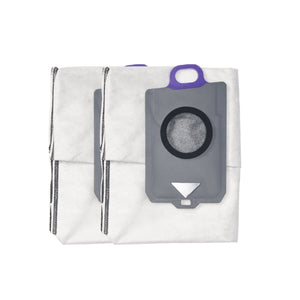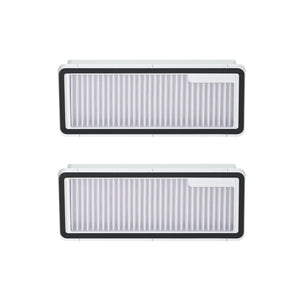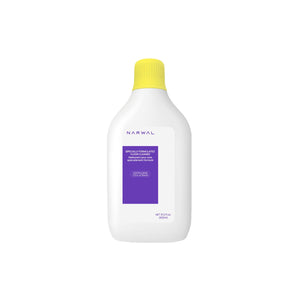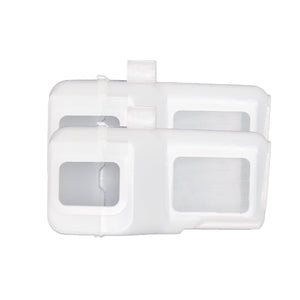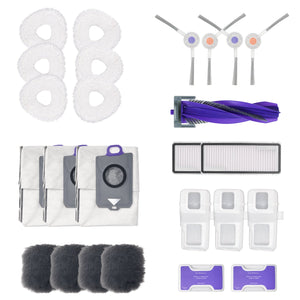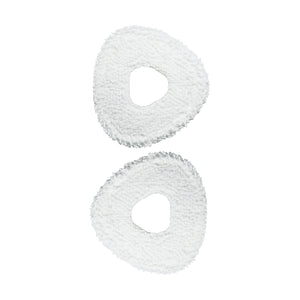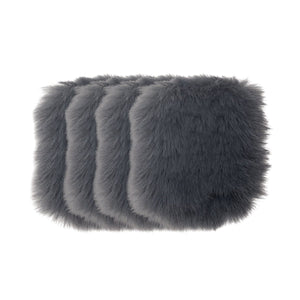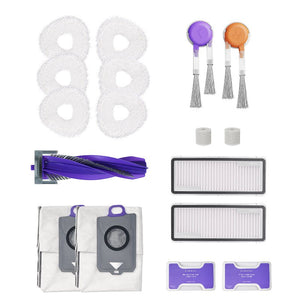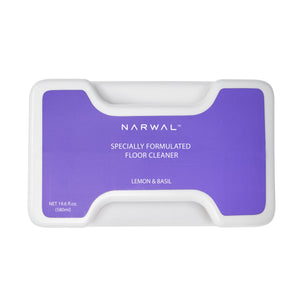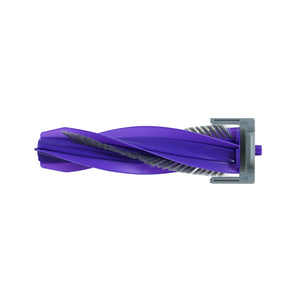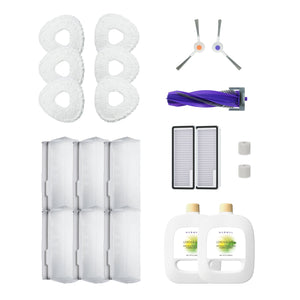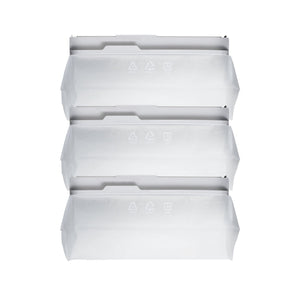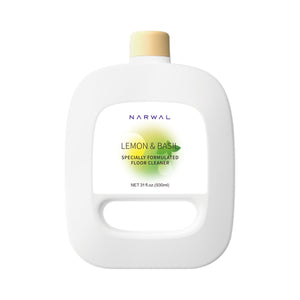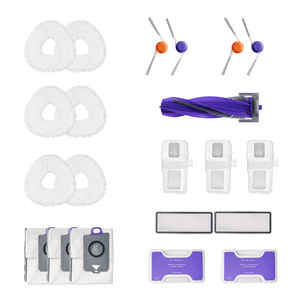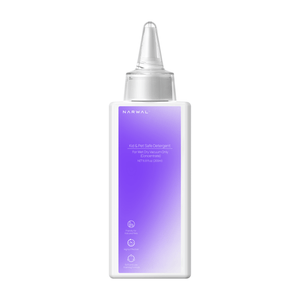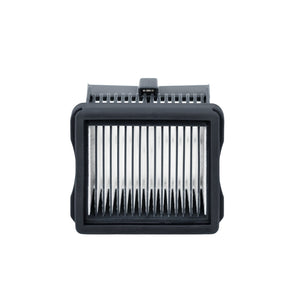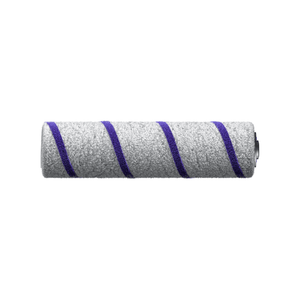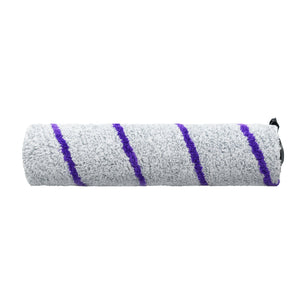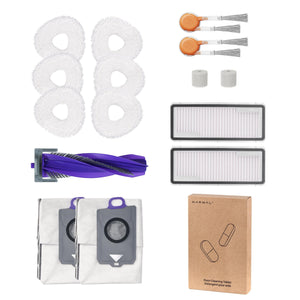Struggling to get your carpets truly clean? A brush roll vacuum might be exactly what you need. Unlike standard suction vacuums, a brush roll vacuum uses a spinning cylindrical brush to agitate carpet fibers—helping lift embedded dirt, pet hair, and debris. This mechanical action allows it to clean more deeply, especially on thick carpets or in homes with pets.
In this guide, we’ll show you how a brush roll vacuum works, what to look for when choosing the best one, and how to keep it in top shape. Ready to discover how this powerful tool can make cleaning more effective? Let’s begin!
What Is a Brush Roll Vacuum?
A brush roll vacuum is a type of vacuum cleaner equipped with a spinning cylindrical brush—called a brush roll—embedded in the main cleaning head. As the brush rotates, it agitates carpet fibers to dislodge embedded dirt, dust, and pet hair, which are then suctioned into the dustbin.
Unlike suction-only vacuums, this mechanical agitation allows brush roll vacuums to clean more deeply, especially on soft surfaces like carpets or rugs.
The brush roll itself is one of the key components of a robot vacuum, working alongside sensors, wheels, and motors to optimize floor cleaning.
Brush Roll vs. Beater Bar: What’s the Difference?
A beater bar is found in older vacuum models. It vibrates the carpet to loosen debris but doesn’t have a rotating brush. It relies on impact rather than brushing motion and tends to be less effective on deep-pile carpets.
A brush roll, in contrast, spins with bristles or rubber fins that agitate carpet fibers. This rotation helps lift dirt and guide it toward the suction opening. Brush rolls deliver a deeper, more targeted clean—particularly on thick carpets or pet hair.
While brush rolls focus on deep carpet agitation, robot vacuums also use other brush types—like side brushes—to sweep along edges and corners.
Can You Turn Off the Brush Roll? Why It Matters
Yes. Many brush roll vacuums offer a manual switch or automatic shutoff to disable the brush roll. This is especially useful on hard surfaces like tile or wood, where a spinning brush might scatter debris or damage delicate finishes.
Being able to turn off the brush roll helps the vacuum adjust to different floor types, offering better protection and cleaning control in homes with mixed flooring.

When it comes to cleaning carpets, you may have heard the terms brush roll and beater bar. They may sound similar, but they actually serve different purposes, and knowing the difference will help you choose the right vacuum.
A beater bar is found in older vacuum models. It works by beating the carpet to loosen dirt. Though it works on some surfaces, it doesn't clean as deeply as a brush roll. The beater bar relies on vibration to shake dirt loose but lacks the brush action that helps lift debris effectively.
Key Features of Brush Roll Vacuums
When selecting a brush roll vacuum, the right features can make a big difference in both performance and daily usability. The most important ones include brush roll design, suction control, self-cleaning ability, floor adaptability, and ease of maintenance.
Brush Roll Design
The structure of the brush roll affects how well it handles different types of dirt. Models with a removable brush roll make it easier to clean out hair and debris—especially helpful for pet owners. Fixed designs tend to last longer but can be harder to maintain.
Suction Power Adjustment
Being able to control suction strength allows you to match the vacuum’s power to the surface. Use higher suction for thick carpets to remove embedded dirt, and lower suction on hard floors to avoid damage and improve maneuverability.
Self-Cleaning Brush Roll
A self-cleaning brush roll automatically removes hair and fibers while the vacuum runs—saving you time and keeping suction performance consistent. This feature is especially valuable in homes with pets or long hair, where frequent tangles are a problem.
Unlike standard brushes that require regular manual cleaning, self-cleaning rolls reduce hands-on maintenance significantly. If you prefer low-effort upkeep, this feature makes daily cleaning faster and more reliable.
Prefer more manual control? Choose a vacuum with a removable brush roll for hands-on maintenance and inspection flexibility.
Adaptability to Floor Types
The best brush roll vacuums can handle both carpets and hard floors. Look for models that let you turn the brush roll on or off, either manually or automatically. This protects delicate surfaces like tile or hardwood from scratching while still delivering deep carpet cleaning.
Ease of Cleaning and Replacement
Brush rolls need regular care to stay effective. A detachable design makes it easier to remove hair, check for blockages, and replace worn-out parts. Easy maintenance means your vacuum stays in top shape for longer—and reduces the chance of performance drops over time.

How to Pick the Suitable Brush Roll Vacuum
Choosing the right brush roll vacuum depends on a few key factors. First, consider your floor type, as some vacuums work better on specific surfaces. Next, think about your cleaning needs. Decide between corded or cordless based on your space and routine. Finally, check for features like self-cleaning brush rolls to simplify maintenance.

Choosing Based on Floor Type
If you own carpets, find a vacuum with a spinning brush roll to deeply stir carpet fibers and lift dirt. For hard floors, pick a vacuum that lets you switch off the brush roll to prevent debris from scattering. This adaptability is key for homes with mixed flooring types.
Choosing Based on Cleaning Needs
Think about your specific cleaning needs. If you've got pets, pick a vacuum with strong suction and a self-cleaning brush roll to handle pet hair well. For commercial use, you may need a more heavy-duty vacuum with higher suction and longer-lasting components to handle the demands of frequent, large-scale cleaning. If you need a vacuum for quick, light cleanups, a lightweight or cordless model might be a better choice.
Corded vs Cordless Options
Decide whether you need a corded vacuum for consistent power, especially in larger spaces, or a cordless vacuum for more portability and flexibility in smaller areas. Corded vacuums generally offer stronger, consistent suction, while cordless vacuums are easier to maneuver.
Self-Cleaning Brush Roll and Maintenance Preferences
A self-cleaning brush roll can save you time by automatically removing hair and debris, especially in homes with pets. However, if you prefer more control over maintenance, look for a vacuum with a removable brush roll, which allows for easy manual cleaning and replacement.
When to Use and When Not to Use the Brush Roll
A brush roll is one of the most powerful tools your vacuum offers—but only when used at the right time. Many people assume it should always be on, but that can lead to scratched floors, tangled rugs, or missed cleaning opportunities. Instead, think of it as a targeted tool to activate selectively based on your floor type and cleaning needs.
When You Should Use the Brush Roll
Brush rolls are most effective when cleaning carpeted surfaces or dealing with deeply embedded debris. Here’s when to turn it on:
-
Medium to High-Pile Carpet: The brush roll agitates thick fibers, lifting dirt, pet hair, and dust trapped deep within. If your vacuum is leaving behind fuzz or odor, the brush roll can help refresh the surface and extract hidden grime.
-
Pet Hair and Allergens: During shedding seasons or in homes with allergies, a spinning brush is key to removing fur and dander that suction alone may miss. It stirs up fibers to capture what’s buried beneath.
-
High-Traffic Zones: Areas like hallways, living rooms, and bedrooms accumulate compacted debris. The brush roll dislodges ground-in particles, improving both cleaning results and carpet longevity.
-
Flattened or Matted Carpet: Over time, carpet fibers can appear dull or crushed. A brush roll helps lift them, restoring a fuller appearance and more even texture.
-
Large Carpeted Spaces: The mechanical action of the brush roll speeds up cleaning in expansive carpeted areas by pulling out more debris with each pass.
In short: If it’s carpet, especially one that sees regular use, activating the brush roll usually improves cleaning performance.
When You Should Avoid the Brush Roll
While great for carpets, the brush roll can cause problems on other surfaces. Use caution—or turn it off—when cleaning the following:
-
Hard Floors (Wood, Tile, Laminate, Vinyl): On smooth surfaces, the rotating bristles can scatter debris or even scratch delicate finishes. For hardwood in particular, brush roll agitation can push grit around and damage the surface coating. Use suction-only or soft brush modes instead.
-
Lightweight or Delicate Rugs: Thin rugs may shift, wrinkle, or get caught in the spinning brush, making cleaning more frustrating than effective. It’s safer to switch off the brush roll to avoid bunching or fraying.
-
Loose Fibers, Tassels, or Fringe: Rugs with open weaves or fringe edges are easily snagged by spinning parts. The brush roll may tangle or damage them, so use a dedicated upholstery tool or soft nozzle attachment instead.
Many modern vacuums—like Narwal Flow—eliminate the guesswork by detecting floor types and adjusting the brush roll automatically. This means you get better results with less effort, no matter the surface.
How to Properly Use a Brush Roll Vacuum
To use your brush roll vacuum effectively, there are a few key things to keep in mind. First, turn the brush roll on or off based on the surface you're cleaning. Next, adjust the suction power according to what you're cleaning. If you're using a cordless vacuum with brush roll shut-off, switch off the brush roll for hard floors to save battery life. Let's examine these key tips more closely.

Adjusting the Brush Roll for Different Surfaces
For carpets, keep the brush roll on. This will lift dirt and debris from inside the fibers. For hard floors, switch off the brush roll to stop debris from scattering or scratching the floor. Many vacuums allow you to switch between these settings easily.
Adjusting Suction Power for Best Cleaning
Change the suction power to fit your cleaning needs. Use high suction for deep cleaning carpets or thicker rugs. For hard floors or delicate areas, reduce the suction to prevent damage and clean effectively.
Tips for Effective Operation
To get the best clean, move the vacuum slowly and steadily. Make sure to overlap your paths to cover the area thoroughly. Focus more on corners and edges where dust and dirt often gather.
Safety Tips When Using a Brush Roll Vacuum
Keep the cord away from obstacles to avoid accidents or damage to the vacuum. Check the brush roll often for tangled hair or debris, and keep the suction path clear for strong suction. Be cautious around stairs and uneven surfaces to prevent accidents.
Common Mistakes When Using the Brush Roll
Using a brush roll improperly can reduce cleaning performance and even damage your floors. Here are key mistakes to avoid:
-
Leaving it on for hard floors: Bristles can scratch wood or scatter debris on tile. Turn it off or use suction-only mode.
-
Vacuuming delicate rugs or fringe: The brush can catch and tangle loose fabrics. Use a soft brush or lift the rug instead.
-
Moving too quickly: Fast passes don’t give the brush time to agitate carpet fibers. Slow, overlapping strokes clean better.
-
Running over wet or sticky messes: Moisture can clog the brush roll and spread dirt. Spot-clean first, then vacuum.
-
Skipping maintenance: Tangled hair and debris reduce performance. Check and clean the brush every few weeks.
Use your brush roll thoughtfully, and you’ll protect your floors—and your vacuum.
Cleaning and Maintaining Your Brush Roll Vacuum
To keep your brush roll vacuum working well, regular maintenance is important. Begin by cleaning the brush roll and vacuum parts to avoid clogs and keep suction strong. If your brush roll stops spinning, check for blockages or a broken belt. Finally, swap the brush roll when it shows wear to keep performance good.

Cleaning the Brush Roll and Vacuum Parts
To keep your brush roll vacuum performing at its best, clean the brush roll regularly. Hair, dust, and debris can get tangled in the brush, reducing its effectiveness. Remove these blockages to ensure smooth operation. Also, remember to clean the vacuum's filters to keep suction strong and prevent clogs.
What to Do If the Brush Roll Stops Turning
If the brush roll stops spinning, check for blockages or tangled hair. Clear any debris and inspect the belt for damage. If everything looks good, make sure the brush roll is turned on. If the problem persists, the brush roll or belt might need to be replaced.
Here is a guide for robot vacuum brush not spinning.
How Often to Replace the Brush Roll?
Replace the brush roll every 6 to 12 months, based on vacuum use. If the brush roll shows signs of wear, such as broken bristles or ineffective cleaning, it’s time to replace it. Replacing it often keeps your vacuum working well.
Related Reading: Robot Vacuum Brush Care: How to Replace, Clean, and Maintain
Additional Features and Technologies That Make Brush Roll Vacuums More Powerful
When picking a brush roll vacuum, consider extra features that boost its performance. These include HEPA filters, the convenience of lightweight brush roll vacuums, and compatibility with different vacuum belts and accessories. Let’s dive into these powerful features.

The Role of HEPA Filters in Brush Roll Vacuums
Many new brush roll vacuums have HEPA filters, good for catching small particles, dust, and allergens. If you suffer from allergies or asthma, a vacuum with a HEPA filter can improve air quality by ensuring that the air being released is cleaner and free from allergens.
Lightweight Brush Roll Vacuums: Advantages for Easy Use
If you want a vacuum that’s easy to handle, consider a lightweight brush roll vacuum. These vacuums are designed for easy maneuverability, making them perfect for smaller spaces or quick cleanups. Despite their lighter weight, they still offer powerful suction and effective cleaning.
Compatibility with Vacuum Belts and Accessories
Some brush roll vacuums are compatible with various vacuum belts and accessories. This allows you to customize your vacuum for different needs. Whether you need a longer hose, extra brush rolls, or a replacement belt, this compatibility helps extend the life of your vacuum and provides greater versatility.
Best Brush Roll Vacuum Recommendations
We’ll go over the best brush roll vacuums from Narwal. We’ll focus on three models: the Narwal Freo Z10 Robot Vacuum & Mop, the Narwal S20 Pro Vacuum Mop, and the Narwal Freo Z Ultra Robot Vacuum Mop. Each of these vacuums is designed to handle different cleaning needs and offer powerful brush roll performance. Let's look at the details.
Narwal Freo Z10 Robot Vacuum & Mop
The Narwal Freo Z10 is a top choice for both wet and dry cleaning. Its self-cleaning brush roll stops tangles and cuts maintenance. This model uses a bionic hand wipe system to scrub corners and edges, removing stubborn stains. With its dynamic edge cleaning and powerful suction, it works well on both carpets and hard floors, making it ideal for homes with pets or heavy traffic areas.
[cta:narwal-freo-z10-robot-vacuum-mop]
Narwal S20 Pro Vacuum Mop
The Narwal S20 Pro features 20,000Pa suction, making it perfect for heavy messes. It has AI DirtSense technology, which adjusts the suction power based on the dirt level, ensuring the most efficient clean. The self-cleaning mop dries the brush to 149°F, keeping it fresh and odor-free. The lightweight design and 5 cleaning modes make it easy to clean various surfaces, from delicate hardwood floors to heavy-duty kitchen spills.
[cta:narwal-s20-pro-vacuum-mop]
Narwal Freo Z Ultra Robot Vacuum Mop
The Narwal Freo Z Ultra provides powerful 12,000Pa suction and real-time cleaning decisions with AI. It spots dirt automatically and changes suction or mop settings. The zero-tangle brush ensures hair and debris are collected without clogging, making it a great choice for homes with pets. It also features a self-cleaning station and advanced navigation, ensuring thorough cleaning across all surfaces.
[cta:narwal-freo-z-ultra-robot-vacuum-mop]
Conclusion
Choosing the right brush roll vacuum can make cleaning easier and more efficient. It’s not just about finishing the task—it’s about choosing a vacuum that delivers deeper cleaning with less manual effort. A high-quality vacuum ensures cleaner floors, less maintenance, and better performance.
Don’t settle for less. Take the next step in making your home cleaner and more comfortable. Pick the right brush roll vacuum for you and enjoy the benefits now.
What Is A Brush Roll Vacuum Used For?
A brush roll vacuum is mainly used for deep cleaning carpets and rugs. Its rotating brush helps lift dirt, dust, and pet hair that regular suction might leave behind. It's ideal for homes with high-traffic areas or pets.
How Does A Brush Roll Improve Carpet Cleaning?
The brush roll spins to agitate carpet fibers, shaking loose debris hidden deep in the pile. This action helps suction capture more dirt per pass, making cleaning more efficient than suction alone.
Can A Brush Roll Vacuum Damage Hard Floors?
Yes, if the brush roll is left on while cleaning delicate surfaces. Some hard floors, like wood or laminate, can get scratched. That’s why many vacuums offer a brush roll shut-off feature to prevent damage.
Do All Vacuums Have A Brush Roll?
No. Only certain upright, stick, or robot vacuums include a brush roll. Suction-only vacuums are typically used for hard floors and may lack a rotating brush altogether.
How Do I Know If My Brush Roll Needs Maintenance?
If your vacuum leaves debris behind, makes unusual noise, or the brush roll stops spinning, it likely needs cleaning or replacement. Check for tangled hair or worn-out bristles as early signs.
My Vacuum Is Stuck or Overheating—Is the Brush Roll the Problem?
It could be. A jammed brush roll—often tangled with hair or blocked by debris—is a common reason for motor strain or poor suction. Check the roller regularly and clean it if needed.
How Often Should I Replace the Brush Roll?
Typically every 6–12 months, depending on how frequently you vacuum and the types of debris collected. Replace it sooner if you notice frayed bristles, decreased cleaning performance, or if the roll no longer spins properly after cleaning.




















